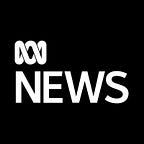One Nation: Voting patterns show Pauline Hanson’s impact runs deep
Fresh analysis of the 2016 federal election shows the impact of Pauline Hanson’s One Nation runs much deeper than the election of four senators would suggest.
And it underlines the extent to which the major parties could be hostage to Hanson supporters at the next election.
The Coalition in particular will be keen, not only for One Nation support for legislation in the Senate, but for One Nation supporters to prefer them over all other parties at the next election.
The first analysis by Monash University political science professor, Nick Economou, shows a change to the voting system cost One Nation a fifth Senate seat — in Tasmania.
He calculates the One Nation candidate, Kate McCulloch, fell just 150 votes short of the Greens’ Nick McKim.
At the recent election, more than one million ballots around the country were exhausted; in other words, stopped being counted because voters now have the option of allocating preferences to just six candidates.
Economou says this meant that in 2013, just 6,765 ballots were exhausted, compared to more than one million in 2016.
He points out that almost 2,000 votes cast for the Shooters, Fishers and Farmers party in Tasmania exhausted, meaning their votes did not in the end favour One Nation over the Greens.
Had they voted under the old rules, the Shooters would easily have given One Nation the edge for the 12th seat.
Surprising One Nation preferences split
But even more alarming — especially for the Coalition — are the findings on where One Nation preferences flowed in the Lower House.
Tim Colebatch researched the election numbers for Inside Story and found astonishingly Labor gained the two seats in Queensland on One Nation preferences.
In Longman — the seat once held for the Coalition by Wyatt Roy — Labor picked up 56.5 per cent of One Nation preferences, helping cut Roy’s lead of 422 votes to a deficit of 1,390.
One Nation directed preferences to Labor in Longman.
In the other Labor gain in Queensland — Herbert — the party issued a split ticket. Yet though Ewen Jones led the count by 1,264 votes with three candidates standing, the 19,000 One Nation preferences helped deliver Labor a 37-vote victory.
Colebatch points out that across the country One Nation preferences split virtually 50–50.
That seems to suggest One Nation supporters are driven by more than the issues that Ms Hanson raises. They are clearly disenchanted with both major parties in equal measure.
Now that the outcome is clear, the major parties know just how important the One Nation preferences are, and will be again at the next election.
Coalition’s preferences problem
Colebatch’s research turns up another important finding.
The Coalition did not win a single seat on preferences. In other words, nowhere did they finish second on the primary vote and go over the top with preferences.
Labor, on the other hand, won 16 of them.
In 11 seats, it was running second behind Coalition candidates with just three candidates left in the count, but overtook them on Greens preferences. In two seats Labor was running second to the Greens but overtook them on Coalition preferences.
So while Labor has a serious problem with its primary vote, it compensates in part because of a strong preference flow.
The Coalition by contrast has a problem with preferences. This time it didn’t matter. Well, not that much. They won, just. Next time it might make the difference.
There are now three distinct non-major party voting blocs in the Parliament.
Nick Xenophon in South Australia, Pauline Hanson — essentially in Queensland — and the Greens in inner Melbourne.
All three won seats in 2016, and will again next time. In fact, the Greens could win four in Melbourne if current trends continue.
And who their voters prefer beyond that is becoming increasingly important.
